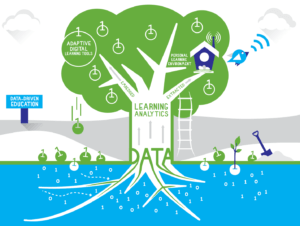 It is common to think about technology as a fast-paced field. With new products, companies, frameworks, and buzzwords, it sounds daunting to catch up. But not all motion is linear and forthright, instead, it might be more appropriate to see ourselves as fish in a school, circling one another.
It is common to think about technology as a fast-paced field. With new products, companies, frameworks, and buzzwords, it sounds daunting to catch up. But not all motion is linear and forthright, instead, it might be more appropriate to see ourselves as fish in a school, circling one another.
Not in vain, mind you. Instead, while each of us moves fast, the collective advances steadily. That is how we sustainably break new ground. So as technologies flash into our eyes, firm ideas take some time to stick. Sarkar chooses what he considers acceptable standards in next-generation algorithms.
Those tried more than once until they show clear ways to add value. Those who made the successful jump from academia to the mainstream. Can they do so in eLearning? Let’s take a look.
Recommendation Engine
 In a way, being on top of the industry’s latest development is to surf its learning curve. When a company releases a small but noticeable feature, we can gain some small insight. Which, will inform the next one and so on.
In a way, being on top of the industry’s latest development is to surf its learning curve. When a company releases a small but noticeable feature, we can gain some small insight. Which, will inform the next one and so on.
We’ve had recommender systems for years, but the insight behind them is only popularizing now. It’s the nature of the pioneer’s trade. Technology only remains cutting edge for so long. Today we see how there isn’t that much to them.
It’s mostly about throwing loads of user data into the blender to pour out a guess of what they might be into next. Right?
Popularity Meta-Rankings
 Alright, there are still a few issues to polish. An automated recommendation is a sound if basic first step. But there are myriad possibilities machines can take on! They can even help us figure out what they are.
Alright, there are still a few issues to polish. An automated recommendation is a sound if basic first step. But there are myriad possibilities machines can take on! They can even help us figure out what they are.
Based on a given definition of popularity, a neural network can find success factors. Which can help determine the kind of training that is most effective in eLearning, beyond a format? Is a whimsical text more memorable than a dry video? Maybe only machines can tell.
Deep Linking
 Another age-old dissent that is earning general awareness involves the merits of supervised versus unsupervised training. The former is easy to define. The latter is some kind of utopia so we can give an Artificial Intelligence (AI) a goal, some variables, and some constraints.
Another age-old dissent that is earning general awareness involves the merits of supervised versus unsupervised training. The former is easy to define. The latter is some kind of utopia so we can give an Artificial Intelligence (AI) a goal, some variables, and some constraints.
Sure enough, it will find a way. But are you confident enough about what you want? Why are you hell-bent on maximizing employee retention at a dispensary?
If you are unable to realize there is more to life than this, let a machine let you see. The right approach can make data science go from insightful to enlightening, that is, among other things, the premise (and promise) behind deep learning.
Smart Proto-Assistants
 Everyone has their version of the ideal Rosie the Robot from the Jetsons. The unanimous end game is reasonable and a system that helps us achieve the goal. Making things easier, preventing or diminishing obstacles and risk.
Everyone has their version of the ideal Rosie the Robot from the Jetsons. The unanimous end game is reasonable and a system that helps us achieve the goal. Making things easier, preventing or diminishing obstacles and risk.
We are not there yet, but AI can gain higher responsibilities over time. Today’s analytics engine can assess the risk of dropping out, but in the not-so-distant future, it could choose the best remedial course. Then decide by itself whether to escalate the issue. And so on.
In sum, the future is hard to predict. But as time moves on, the cone of possibilities shrinks down. We may not know which feature will set the tone for the future of Moodle (Or become its deadly blow). But following the trends and compounding on the ever-desirable data science skills sound like reasonable survival strategies.
Let us know what you think.




Responses